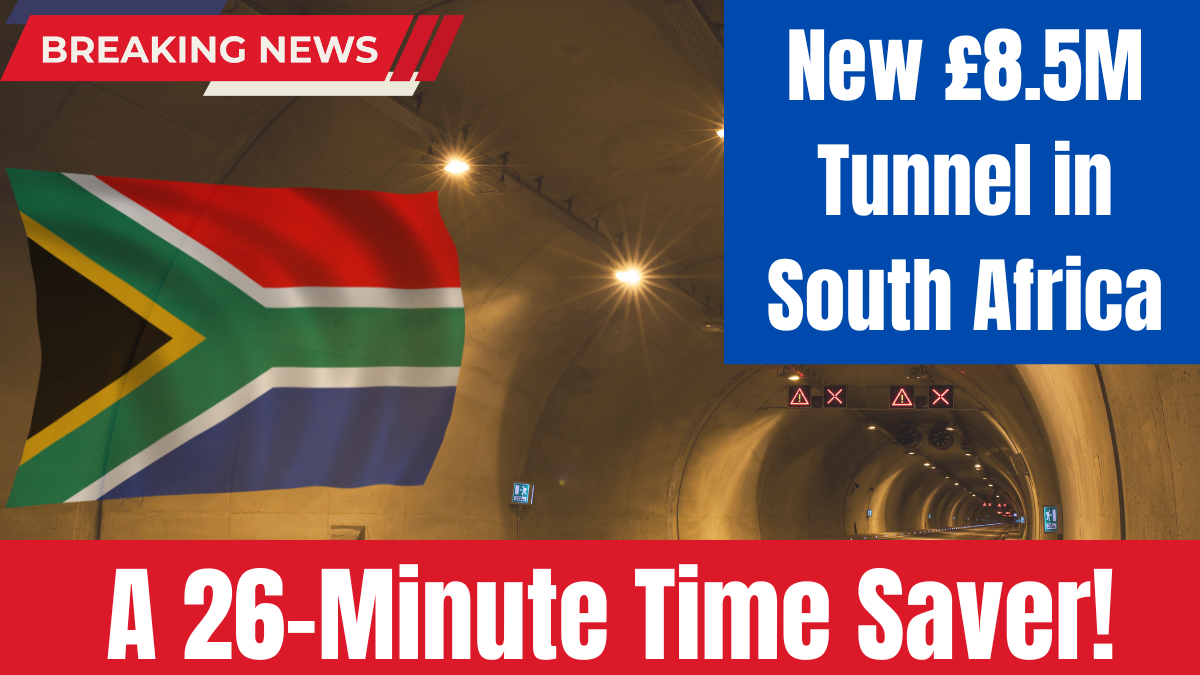The Huguenot Tunnel, South Africa’s longest road tunnel, has transformed travel between Paarl and Worcester, reducing the journey by 6.8 miles and saving commuters 15 to 26 minutes on average.
Built at a cost of £8.5 million, this 4km-long tunnel forms part of the N1 highway, a crucial route that runs from Cape Town to the Beit Bridge border with Zimbabwe. The tunnel bypasses the treacherous Du Toitskloof Pass, providing a safer and more efficient alternative.

Why Was the Huguenot Tunnel Built?
Before the Huguenot Tunnel was constructed, travelers had to navigate the steep and winding Du Toitskloof Pass, which added significant travel time and increased the risk of accidents.
Key benefits of the tunnel include:
- Shorter travel distances – Reducing the trip by 6.8 miles
- Time savings – Cutting up to 26 minutes off journeys
- Enhanced safety – Avoiding hazardous mountain roads
- Economic benefits – Improving logistics for businesses and freight transport
How Was the Huguenot Tunnel Constructed?
The tunnel’s engineering precision is remarkable. The two drilling heads used to bore through the Du Toitskloof Mountains achieved an incredible accuracy of just 3mm over the entire 4km length.
- Construction started: 1984
- Tunnel opened: 1988
- Total construction time: 4 years
What Are the Future Expansion Plans for the Tunnel?
To accommodate growing traffic demands, the Western Cape Mobility Department has announced a major expansion project.
- A new North Bound Tunnel will be constructed within the next three years
- The existing South Bound Tunnel will be upgraded
- Both tunnels will have two lanes each, allowing smoother traffic flow
MUST READ: Largest Hindu Temple in Southern Hemisphere Opens in South Africa – A Historic Moment
How Will the Expansion Impact Travel and the Economy?
The five-year expansion project aims to:
- Increase daily capacity from 13,000 to 25,000 vehicles during peak hours
- Create 500 new jobs in construction and related sectors
- Support women and youth-owned businesses through development initiatives
- Enhance regional economic growth without increasing toll fees
FAQs
How much time does the Huguenot Tunnel save?
The tunnel cuts between 15 and 26 minutes off travel time by bypassing the Du Toitskloof Pass.
When was the Huguenot Tunnel built?
Construction began in 1984, and the tunnel was officially opened in 1988.
What is the length of the Huguenot Tunnel?
The tunnel spans 4km, making it South Africa’s longest road tunnel.
What is the purpose of the planned expansion?
The expansion project will add a new North Bound Tunnel and upgrade the South Bound Tunnel, increasing road capacity and improving travel efficiency.
How many vehicles use the tunnel daily?
Currently, the tunnel handles 13,000 vehicles per day, with plans to expand capacity to 25,000.
Will toll fees increase due to the expansion?
No, the toll fees will remain unchanged despite the improvements.
What impact does the tunnel have on the economy?
By reducing travel time, improving logistics, and supporting local businesses, the tunnel strengthens South Africa’s trade and transport network.
How accurate was the tunnel’s construction?
The two drilling heads used for excavation achieved an accuracy of just 3mm over the entire 4km tunnel length.
Conclusion
The Huguenot Tunnel is a critical infrastructure project that has significantly improved travel between Cape Town and the northern regions. With the planned expansion, it will further boost economic growth, create jobs, and enhance travel efficiency without increasing costs for commuters.
This £8.5 million investment continues to play a vital role in South Africa’s transport and trade network, making travel faster, safer, and more convenient.
A passionate content writer specializing in creating engaging, SEO-optimized content. With expertise in blogs, web copy, and storytelling, I craft words that connect with audiences and deliver results.
